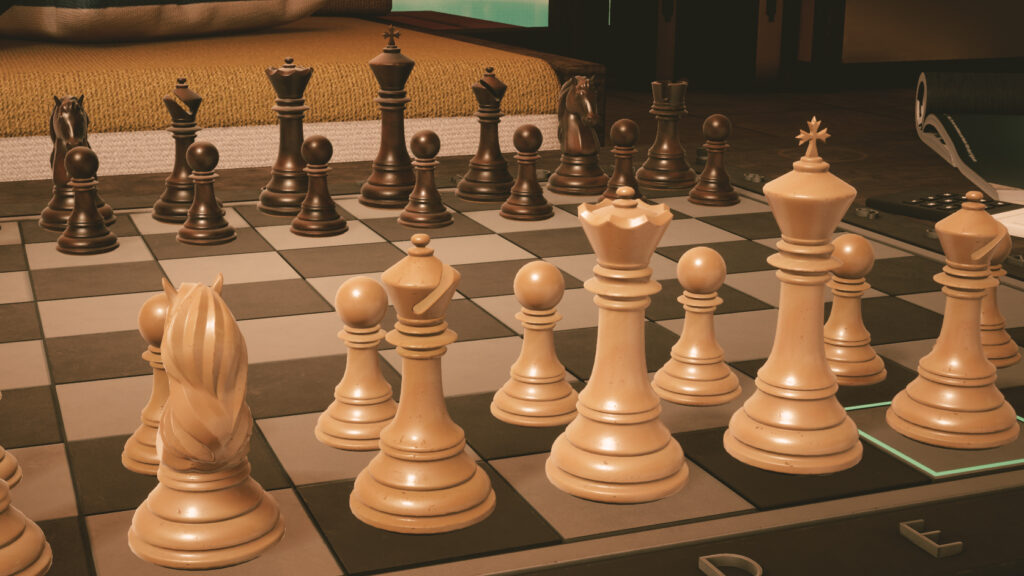Are you unfamiliar with the game of chess and keen to advance your skills and understanding? If you’re looking for beginner-friendly chess tips, tricks, and resources to get you started, this topic is just for you.
The game of chess has very basic rules that haven’t changed much in hundreds of years. Each player commands an army of sixteen pieces, consisting of a king, a queen, two rooks, two knights, two bishops, and eight pawns, on a square chessboard. Assuming control of your opponent’s king and positioning it such that it is unable to escape is known as checkmate. At the beginning of the game, each player has their pieces placed on the board in a particular order. Each player places their pieces in the first and second rows, or ranks, of the 64-square board.
Players take turns, with the white player always moving first. Each turn, they can make one move. Every kind of piece moves differently and in accordance with predetermined regulations. The pawn can travel one square forward (or two squares on its first move), but it can also advance one square diagonally to capture an opponent’s piece. Similarly, the rook are capable of moving any number of squares along a rank or file, the bishop can travel any number of squares along a diagonal, and so on.
Chess has many more rules and ideas, such as en passant, promotion, and castling, but the main principle is to utilise your pieces to take control of the board, attack the pieces of your opponent, and eventually checkmate the opponent’s king.
10 Tips For Chess Beginners
1. Never give up the centre control
Beginner chess instruction frequently emphasises the importance of fighting for centre control at all times. By rearranging their pieces to form blocking and attacking positions, the player should aim to maintain control over as much of the board as they can. Centre pawns are typically quite important in the opening move. You’ll probably have control and win the game if you can keep the centre under control throughout. Beginners can become skilled chess players very quickly if they adopt an aggressive strategy and seize control of important parts of the board, such as the centre.
2. Take out your opponent’s chess pieces
The way you attack in chess is by taking control of your opponent’s chess pieces. By taking this piece and swapping it with your opponent, you can weaken their plan and provide openings for an assault or countermove. You have to recognise the parts that are always ready to strike and cause serious issues. If you can take them out and carry on with your plan, you can win.
3. obstruct your opponent’s movement
Keeping the other guy’s pieces from moving allows you to pressure them into making mistakes that will allow you to carry out your plan more successfully. One of my favourite chess pieces to stop my opponent’s moves is the pawn. In particular, I want to put my pawn in front of their pawns that are blocking Bishop’s moves. By blocking, you can delay your opponent from moving their pawns and putting their plans into action while making it difficult for them to unblock their pieces. By stopping your opponent’s moves, you can determine how the game plays out and win in the end.
4. Set up your pieces for victory
Placing your pieces to deal the most damage and make the best movements is the best strategy to win a game of chess. To win, it’s critical to arrange your pieces in the most advantageous positions. Rooks, queens, and bishops are examples of pieces that can travel swiftly across the board and assist you in gaining a winning position. Proper placement of your pieces will also keep your opponent from gaining a winning position. Gaining experience in identifying advantageous positions will help you become a better chess player faster and win more games.
5. Avoid leaving pieces dangling
It is vital to constantly be aware of what is going on the board when playing chess. You must make sure that you are not losing the game by leaving your pieces dangling or unguarded. Of course, your King is the most crucial piece to protect, but if you leave other pieces exposed or unguarded, your opponent may use them to establish a strong position. Your opponent can bring their pieces towards your King by taking advantage of the vacant space on the board, which makes dangling pieces vulnerable to a counterattack. Always be ready for any possible move your opponent might make, and keep your concentration on winning the game.
6. Try to make the game simpler
Hopefully, you are in a great positional advantage because you have already gained a material advantage. Simplifying the game is the next step to take. By making the game simpler, what do I mean? In order to increase your chances of winning, you must decrease the amount of pieces on the board. You can trade pieces in order to eliminate minor pieces from your opponent’s board and, ideally, leave your King against another small piece (such as a rook, bishop, or queen). You’ll win more games if you can figure out how to make the game simpler, especially towards the end.
7. Learn three chess traps
Studying chess traps is one of the most fascinating things you can do as a beginning player. Everyone enjoys learning and using this feature of the game. One of my favourite aspects of chess is this, particularly if the trap can be well used. For the gaps you are studying right now, or for a standard opening, I suggest learning three chess traps! By doing this, your odds of winning a game will become greater.
8. Assess five checkmate patterns
After studying three different chess traps, you should look at five different checkmate patterns. Why is knowledge of checkmate patterns important? so that you are prepared for them should you come across them in a live or online game. Not being able to spot checkmate trends is annoying, especially when using a timer. You will probably lose if you are unable to carry out a checkmate. You should go over the top five checkmate patterns you see on a daily basis. After that, look at five more checkmate patterns and try to use them in a game.
9. Examine the King pawn opening
The most popular chess opening in the game is the King’s pawn opening move. Therefore, you should learn how to play and defend against the king’s pawn opening as a beginner. Gaining an advantage by learning as effectively as you can concerning this opening move can help you win whether you choose to play with or against it.
10. Study the chess opening of the London system
The London system is a chess opening that you can play against any opening move your opponent makes and that you can play almost with any colour. I advise you to read as much as you can about this opening and start learning it as a novice.
How is the chess board set up?
- The first step in setting up a chess board is to lay it out flat and position the white square in the lower right corner.
- Next, arrange every white piece on the board’s first rank, or row. Start with the rooks in the corners and work your way inside to position the knights, bishops, queen, and king.
- After placing the rooks in the corners and working your way inward to arrange the remaining pieces, place the black pieces on the ninth rank.
- One pawn in each square and the pawns in the second and seventh ranks are where they should go.
After setting up the board, each player takes turns moving once, with the white player always moving first. The game goes on until one player checkmates the king of the other player, or until both players agree to proclaim a draw or until the game’s regulations are followed.
How do the chess pieces move?
Chess has its own set of rules that dictate how each piece moves.
- Any direction (horizontally, vertically, or diagonally) is possible for the king to proceed in.
- Across a diagonal, file, or rank, the queen may go any number of squares.
- Along a rank or file, the rook can move any number of squares.
- Along a diagonal, the bishop can move any number of squares.
- After making a second 90-degree spin and moving to an adjacent square on that line, the knight goes to any square that is immediately adjacent to its present position.
- The knight can “jump” over other pieces with this move.
- The pawn captures an opponent’s piece but can advance one or two squares on its first move.
Conclusion
For a beginner, it is beneficial to learn the techniques and guidelines of the chess game. You will, however, succeed sooner if you add up all of the insider tips and methods. Examine the chess tips and techniques listed above. However, remember to practise. Play lots of chess games with other amateur players, practise solving chess puzzles, and practise, practise, practise.
More:













